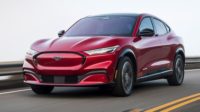Radar Start-Ups Drive ADAS and AV Technology

Illustration courtesy IDTechEx
CAMBRIDGE, England—A variety of start-up companies are developing next-generation radar technology for autonomous driving and advanced driver assistance system (ADAS) applications. According to a recent report by IDTechEx, those firms have raised almost $1 billion in funding over the last 12 years.
“This influx of capital can be attributed to three key drivers,” says Shihao Fu, technology analyst at IDTechEx. “First, the automotive industry's growing demand for safety and robust environmental perception highlights radar's all-weather, high-reliability detection capabilities. Second, the rise of electric vehicles and robotaxis has opened up broader application scenarios for radar.
“Finally, emerging technologies such as 4D imaging radar, high-resolution radar and radar-on-chip [systems] continue to improve sensing accuracy and data fusion, maintaining long-term investor confidence in the radar market,” explains Fu.
During this funding wave, companies like Arbe, Mobileye and Uhnder have taken the lead by launching new types of high-performance radar products. These systems have used innovations such as high-resolution sensing and digital beamforming, resulting in improvements in detection accuracy and processing speed. At the same time, advancements in semiconductor manufacturing have decreased production costs, enabling automakers to integrate radar systems into a variety of mass-market vehicles.
Fu predicts that radar technology will soon move into a "practical development" phase. He claims that industry players must address challenges in three key areas: technology innovation, such as 4D imaging, ultra-wideband and multi-functional integration; cost control to ensure high performance while continuously reducing costs; and commercial adoption—forming close partnerships with Tier 1 suppliers and OEMs to facilitate large-scale deployment.
In the past, radar's limited vertical resolution often led to misdetections in scenarios like overpasses. “When a vehicle is parked under a bridge, conventional 3D radars might merge the overpass structure with the car's roof into a single detection, causing the system to misjudge clearance and overlook collision risks,” explains Fu. “As the industry shifts toward higher-level autonomy, vehicles must accurately distinguish bridges, other vehicles and pedestrians…and respond safely.”
To address these challenges, start-ups and Tier One suppliers are expediting the development of 4D imaging radar. Compared to 3D radar, 4D imaging radar offers more granular object data across horizontal, vertical, depth and velocity dimensions. Leveraging multi-antenna arrays and digital beamforming, 4D radars significantly enhance spatial resolution and object classification, reducing false alarms and missed detections in complex traffic conditions.
As more Level 3 autonomous vehicles enter the market, Fu believes that radars will move beyond driver assistance to serve as a critical layer in environmental perception and advanced decision-making.
For instance, he says blind-spot detection technology will evolve toward 360-degree monitoring.
That technology will require multiple short-range radars placed around a vehicle, complemented by forward radar to enable safety features such as pedestrian automatic emergency braking (PAEB) in more complex scenarios. PAEB will use radar, cameras and intelligent algorithms to detect crossing pedestrians, bicycles or other obstacles when turning or exiting side roads. It will automatically issue warnings and apply brakes if necessary.
Looking for a reprint of this article?
From high-res PDFs to custom plaques, order your copy today!






